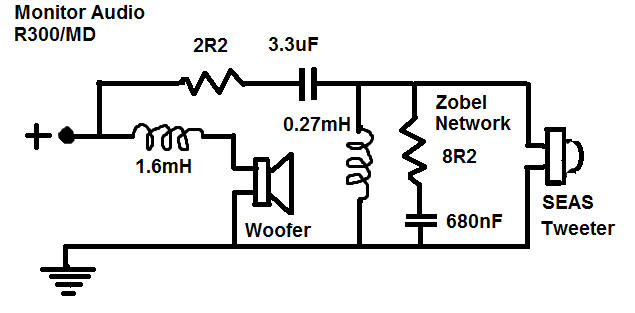
SB ACOUSTICS TW29R & SB23NRXS4

Thank you for the appreciative response to my creation.
The input suggests a positive reception of a project, likely related to electronics or a similar field. The mention of "System 7" could imply a specific platform, software, or hardware system that is relevant to the project. The reference to a "creation" indicates that a prototype or design has been developed, which may involve intricate electronic components or circuitry.
In the context of an electronic schematic, it is essential to consider the following elements:
1. **Power Supply**: The circuit should include a reliable power supply section, which may consist of voltage regulators, capacitors, and filtering components to ensure stable operation.
2. **Microcontroller or Processor**: If the creation involves computational tasks, a microcontroller or processor may be integrated. This component will manage inputs and outputs, execute control algorithms, and handle communication protocols.
3. **Input/Output Interfaces**: Depending on the application, various input devices (sensors, switches) and output devices (LEDs, motors, displays) may be included. Each interface should be clearly defined with appropriate resistors, transistors, or drivers as necessary.
4. **Signal Conditioning**: For accurate data acquisition, signal conditioning circuits may be required. This could involve amplifiers, filters, and analog-to-digital converters (ADCs) to process sensor data effectively.
5. **Communication Modules**: If the creation requires networking or remote control capabilities, communication modules (such as Wi-Fi, Bluetooth, or RF modules) should be integrated into the design, ensuring proper interfacing with the microcontroller.
6. **Protection Circuitry**: To safeguard the circuit against voltage spikes, reverse polarity, or overcurrent conditions, protection components such as diodes, fuses, and transient voltage suppressors should be included.
7. **PCB Layout Considerations**: Proper layout techniques must be applied to minimize noise, ensure signal integrity, and facilitate efficient thermal management. This includes the placement of components, routing of traces, and grounding strategies.
8. **Testing and Validation**: The final design should undergo rigorous testing to validate functionality, performance, and reliability. This may involve simulations, breadboarding, and prototyping before finalizing the schematic for production.
By addressing these components and considerations, a comprehensive electronic schematic can be developed that meets the intended purpose and performs reliably in its application.Wow. System 7 thankyou so very much for your appreciative response to my Humble creation. My wife would not say i was gifted but Anal to the ooint.. 🔗 External reference
The input suggests a positive reception of a project, likely related to electronics or a similar field. The mention of "System 7" could imply a specific platform, software, or hardware system that is relevant to the project. The reference to a "creation" indicates that a prototype or design has been developed, which may involve intricate electronic components or circuitry.
In the context of an electronic schematic, it is essential to consider the following elements:
1. **Power Supply**: The circuit should include a reliable power supply section, which may consist of voltage regulators, capacitors, and filtering components to ensure stable operation.
2. **Microcontroller or Processor**: If the creation involves computational tasks, a microcontroller or processor may be integrated. This component will manage inputs and outputs, execute control algorithms, and handle communication protocols.
3. **Input/Output Interfaces**: Depending on the application, various input devices (sensors, switches) and output devices (LEDs, motors, displays) may be included. Each interface should be clearly defined with appropriate resistors, transistors, or drivers as necessary.
4. **Signal Conditioning**: For accurate data acquisition, signal conditioning circuits may be required. This could involve amplifiers, filters, and analog-to-digital converters (ADCs) to process sensor data effectively.
5. **Communication Modules**: If the creation requires networking or remote control capabilities, communication modules (such as Wi-Fi, Bluetooth, or RF modules) should be integrated into the design, ensuring proper interfacing with the microcontroller.
6. **Protection Circuitry**: To safeguard the circuit against voltage spikes, reverse polarity, or overcurrent conditions, protection components such as diodes, fuses, and transient voltage suppressors should be included.
7. **PCB Layout Considerations**: Proper layout techniques must be applied to minimize noise, ensure signal integrity, and facilitate efficient thermal management. This includes the placement of components, routing of traces, and grounding strategies.
8. **Testing and Validation**: The final design should undergo rigorous testing to validate functionality, performance, and reliability. This may involve simulations, breadboarding, and prototyping before finalizing the schematic for production.
By addressing these components and considerations, a comprehensive electronic schematic can be developed that meets the intended purpose and performs reliably in its application.Wow. System 7 thankyou so very much for your appreciative response to my Humble creation. My wife would not say i was gifted but Anal to the ooint.. 🔗 External reference